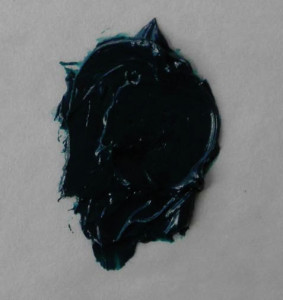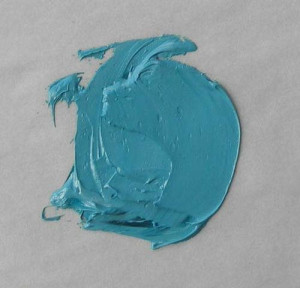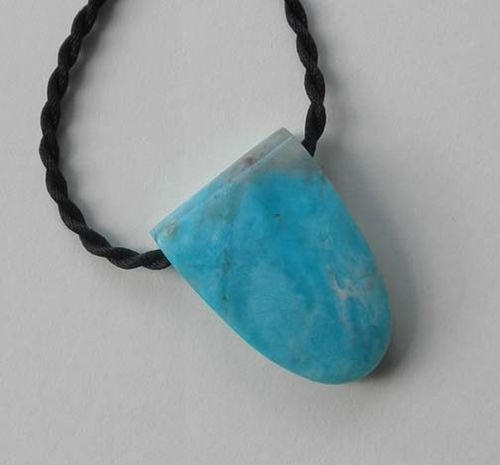One of the most exciting things about my Lessons projects is unearthing new pigments heretofore unknown. Amazonite is one that I discovered sometime back, and it’s sold through the Daniel Smith company in Seattle. They do not sell it in the powder form, which I would have preferred, so I bought a tube of the oil shown here pure from the tube.
They get their pigment from Brazil but it is also found in the Southwest areas of the U.S. most commonly in Colorado’s Pikes Peak region. Shown below is the D. Smith pure pigment mixed with Rublev’s Lead White. The D. Smith pure pigment is transparent and has excellent light-fast qualities. Mixed with yellows it makes a stunning variety of greens.
Amazonite is usually blue or green and is a variety of feldspar and can appear as crystals. This differs from other formless shapes found in most other areas of the world. The lead in the granite gives it the blue/green color.
While strolling through our local Farmer’s Market a couple of weeks ago, I spotted some jewelry that initially had the appearance of turquoise. On closer examination, I learned it was Amazonite.
After talking with the craftswoman at length, she explained her stones come from Colorado in the raw form. She creates splendid pendants and other jewelry such as this. I like to think that artists from the Native American cultures historically used this mineral as a pigment or in other artifacts. I have never found any such evidence, but it is a pleasant thought. It is certainly apropos for this Lessons from the Spider Woman series.
Have any of you seen this beautiful stone or used the Amazonite pigment?




Hi there
Your post Margret E Short Fine Arts Blog: Amazing Amazonite is helpful & well considered, I
will definitely be back to read your blogs!
Hello, so glad you found the post helpful. Regards, Margret